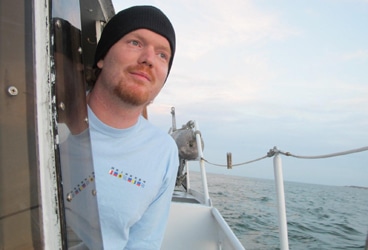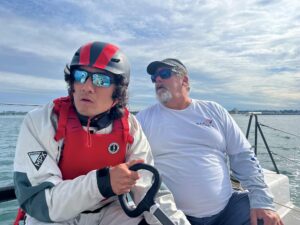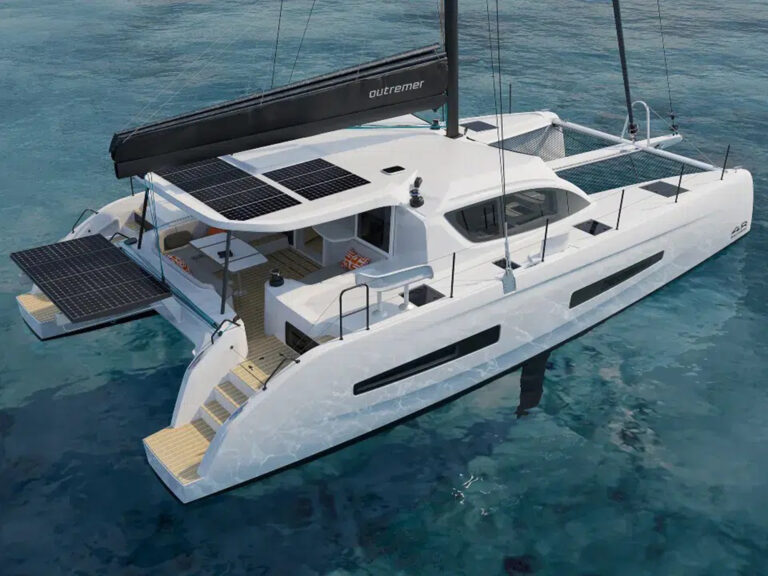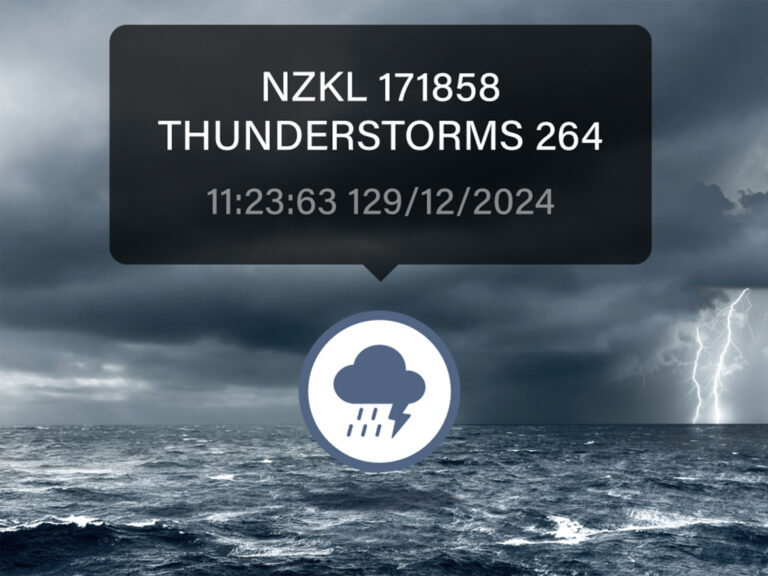
It’s morning, I’m barely standing in the head while the boat heals 25 degrees and I’m applying a last coat of cortisone to my jelly stung speckled hands and retiring my hand sewn heart-shaped eye patch that served as a shield for my jelly sting inflicted eyeball to rest and heal over the past few days. I reach for my toothbrush and I stare at it for awhile, noting how every last bit of it is plastic down to the bristles. I have a confession to make, I am a Plastic Addict, are you? How did this happen! Plastics certainly have made their mark. It’s as if King Plastic touched everything he could see and made it so. Sailing and scientific sampling rely on plastic. And alas here we are exposing not how “plastic is bad let’s ban it” but “hey, look at how human carelessness with plastic trash disposal can come back to haunt us”.
But first you may ask, “Why do I care?” it will accumulate downstream in the middle of our oceans, out of sight out of mind. Well plastic will threaten human health as it accumulates in the marine food web and which just may wind up manifested within that fine seafood dinner we enjoy on occasion. Plastic may make an uninvited appearance as you eagerly review your vacation photos of marine life in their glorious element but often not encountered without evidence of plastic constricting their natural growth and movement.
Point is plastics mostly float, they do not breakdown easily, they absorb toxins, are eaten and entangle causing harm to marine life, are an invasive species hitchhiking dream for worldwide transport, not to mention they accumulate where ocean currents circulate (gyres) and then stay there. This is a big problem people and we are the cause, so Ocean Research Project set off to show you the effect. Researchers have not been able to entirely define the North Atlantic Gyre region aka Sargasso Gyre nor widely verify the hypothesized amount of plastics it contains. Nor have they systematically explored what toxins may lurk in the plastic debris way out there. We embrace this need to monitor current conditions that is why we are out here.
After about 2230 miles we started our study to fetch the observations necessary to determine the gyre’s eastward advance and plastic presence we are now more than half way through the survey and approaching our 28th trawl station. Still sailing, we pull a manta net every 50 miles for 2.5 miles, the apparatus is not a complicated high tech sea toy but reliable if carefully rigged and set. The equipment resembles a manta ray but reincarnated into an aluminum surface skimming trawl net that filters plastic from water. To not compromise the sample or damage the trawl the boat speed must not go above 2.5 knots. We quickly came up with combinations of modifying sail area, trim, occasional drogue deployment and altering boat course to meet the slow speed need at different sea states.
Who would have thought we would reef all sails to their maximum reef points and deploy a Fiorentino shark drogue going downwind, with a following sea on a Force 4 day. It can be hard to manage the trawl samples consistently, but a standard practice is in the works. Especially for our safety, for instance, the gloves go on and tongs come out when we catch a jelly, remember my earlier mention of the eye-patch, then I proceed to dip the beautiful stingers (colorful pink and purple man-o war’s) into a bucket to rinse free the plastic covering their bodies, it is tough as micro-plastics are often caught in their tentacles, then I chuck them back overboard to sail on.
There are a number of ways plastic ends up in the drink. The lazy tourist toss or “not in my backyard” mentality adds up especially on our beaches and public places. I can’t help to think about my past few years where a littered waterfront with overflowing trash bins resulted on Solomons Island, MD after a hoard of Marylanders enjoyed the fireworks of the 4th of July, a place where a few dozen recycle bins might make a great experiment. There is also the effortless one-use throwaway status quo making entertaining easy and the red solo cups fun to clean up. Then there is the inevitable voyage of our sidewalk-parking lot litter that dances with the leaves in the wind then in time will join the storm water run-off parade bound for the high sea. Some of us do have our contemplative moments, “Do I pick it up?” in the parking lot or cruising along your local waterway. I’ve learned to recycle plastic over the years but as my career and adventures change location sometimes I am left hauling my recycling around with me finding a place where it will actually be truly taken to a recycling center.
Maybe today’s culture has more important things to do than make time to sort trash, learn about their town’s waste management system and commit to not being a part of the cause but solution. How easy is it to reduce, reuse, and recycle anyway? Let’s add two more R’s, redesign and recover? Does accumulation of plastics and plastic cancer causing toxins in seafood you eat freak you out, like it freaks me out? Well I guess I should choose plastic products not produced by hydrocarbons but bio-plastics or other green chemistry approaches without the health threatening chemicals and additives. So I face my addiction its time to own up and be an educated consumer and avoid my ignorance and take the extra effort to seek out the proper recycling options wherever I wander.
Today, a town cop is not going to fine me for not recycling nor will my doctor tell me what labels to look for on consumer products that reveal truly “safe” plastic products for both my health and Mother Nature? Well if plastics don’t do me in, in 30 years or so maybe I can join Ocean Research Project on a return study monitoring change in the gyre, hopefully to reporting a decrease in marine debris accumulation, but we must hurry both individually and collectively and knock our lazy trash act throughout the plastics life-cycle from production to disposal.
Learn more about the voyage at the Ocean Research Project website.








